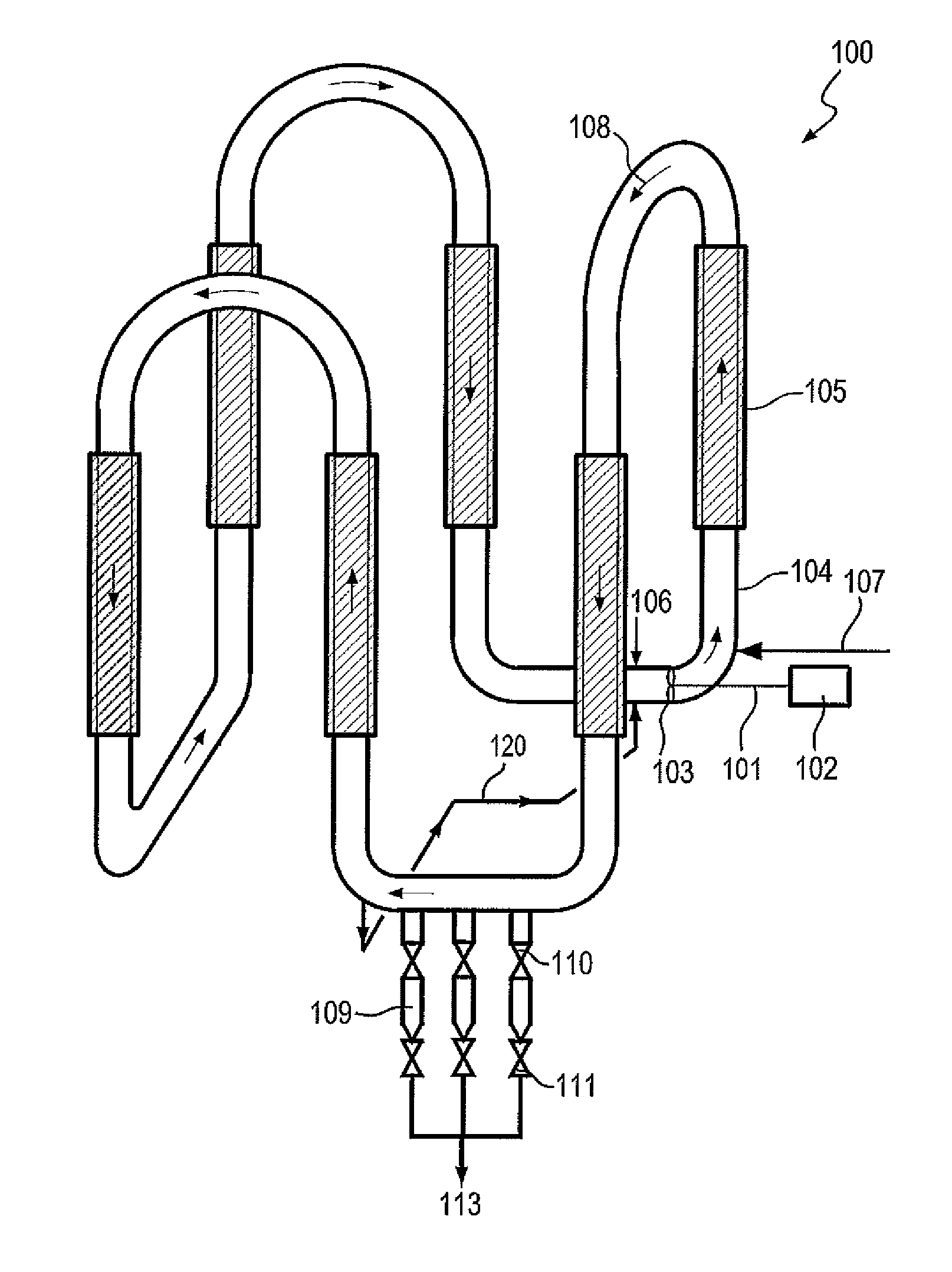Process for preparing polyolefins
a polyolefin and polymer technology, applied in chemical/physical/physical-chemical processes, chemical apparatus and processes, chemical/physical/physical-chemical stationary reactors, etc., can solve the problems of reactor or down stream polymer processing equipment failure, loss of reactor control, and decrease in heat exchange efficiency between the bulk of the reactor and the coolant around the reactor, etc., to achieve better control of process conditions, reduce production costs, and reduce blockage
- Summary
- Abstract
- Description
- Claims
- Application Information
AI Technical Summary
Benefits of technology
Problems solved by technology
Method used
Image
Examples
example
[0081]Ethylene monomer, chromium catalyst, hydrogen, and about 18 t / h of isobutane diluent are fed to a reactor as illustrated in FIG. 1, comprising a by-pass. A 5% by weight solution of antifouling agent in hexene is introduced through a line at the beginning of the by-pass pipe under diluent flushing of 200 kg / h.
[0082]The slurry in the main reactor path comprises around 4 ppm antifouling agent (as a function of diluent). The level of antifouling agent at the injection into the by-pass is around 360 ppm (as a function of diluent).
[0083]Introduction of the anti-fouling agent in the by-pass leads to a stable reactor and by-pass. There are no blockages, process conditions are well-controlled and an optimal polymer end-product is obtained.
PUM
| Property | Measurement | Unit |
|---|---|---|
| MW | aaaaa | aaaaa |
| MW | aaaaa | aaaaa |
| MW | aaaaa | aaaaa |
Abstract
Description
Claims
Application Information
 Login to View More
Login to View More - R&D
- Intellectual Property
- Life Sciences
- Materials
- Tech Scout
- Unparalleled Data Quality
- Higher Quality Content
- 60% Fewer Hallucinations
Browse by: Latest US Patents, China's latest patents, Technical Efficacy Thesaurus, Application Domain, Technology Topic, Popular Technical Reports.
© 2025 PatSnap. All rights reserved.Legal|Privacy policy|Modern Slavery Act Transparency Statement|Sitemap|About US| Contact US: help@patsnap.com


